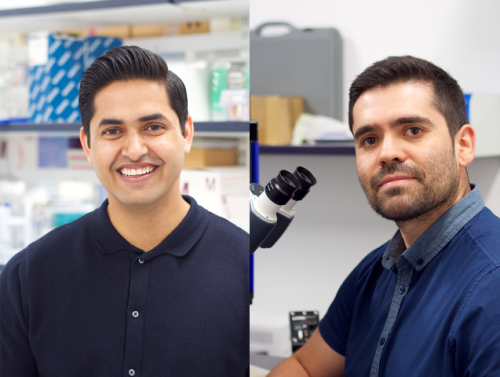
Research published by the groups of MRC-PPU researchers Greg Findlay and Satpal Virdee reports a new method to shed light on how cell communication is disrupted in patients with certain forms of intellectual disability. These highly debilitating conditions affect 1-3% of the world’s population and most have no cure or treatment. A significant portion of these disorders have an underlying genetic origin, with frequent disruption to genes encoding components of the ubiquitylation system – a central regulatory apparatus of the cell. However, a major challenge remains to determine the impact of disease-associated genetic variants on protein function, and therefore establish the cause of disease in patients.
Working in collaboration, the research groups employed technology known as an activity-based probe, which was developed by Satpal Virdee’s lab, to monitor the activity of a family or enzymes known as E3 ligases. RNF12 is an E3 ubiquitin ligase, the function of which is disrupted by mutations found in patients suffering from a form of intellectual disability termed Tonne-Kalscheuer syndrome (TOKAS).
Francisco Bustos and Carmen Espejo-Serrano in Greg Findlay’s lab worked closely with Sunil Mathur from the Virdee lab and were able to deploy the activity-based probe to report the impact of TOKAS variants identified from patients on RNF12 function, thereby pinpointing the cause of disease. Excitingly, the team also successfully deployed this technology in human tissue samples, suggesting that the approach could be used as a diagnostic to identify whether and how mutations in RNF12 cause intellectual disability, and if individuals might be predisposed. These findings also suggest that this approach could potentially be widely used to illuminate disruption of E3 ubiquitin ligase enzymes in other devastating diseases, including cancer, immune disorders and other indications. This work was funded by the MRC, Wellcome Trust and Tenovus Scotland.

